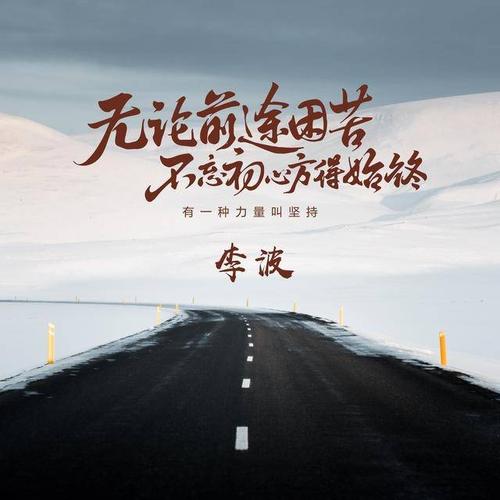考研英语06年真题四篇阅读错了13个!情何以堪!!是不是06年的比较难啊
 赵武
赵武考研英语真题2006 Text 4五问
 必变
必变 喝
喝
一、第一句为强调句,楼主弄错了。二、第二句里面what our economy depends on us forgetting在破折号里面做我们所遗忘的what we forget的补充说明。三、这是一个省略句,大概的意思是说,到处都是这样的人。作者用这个手法来表示他的讽刺与不满,中文中常有没有语法的东东,楼主不必可以强调这个,知道意思就行。四、个人认为应该是翻译二,因为文章开始的时候就说了艺术家比较怪异的感情倾向,因此这里应该是指代的负面感情。五、are those/best suited for expressing joy 谓 宾 宾语补足语(其实是省略了that的从句) 再说明一下,楼主这样读文章,考研必败!因为你研究的没有一个是长难句,也并不都是出题点,更没有很多难词汇,熟词僻义的,因此根本就没有什么研究价值。力气要花在要点上。 而且就我看来,楼主英语基础并不太好,这样复习根本就不适合,还不如多看看阅读的方法什么的,这样对于你做好题目,得好分数是有帮助。真的有研究英语的毅力可以等到考完了再慢慢来。
考研英语试卷中阅读文章都是出自哪里
 物也
物也 蜀山传
蜀山传
根据数据统计,80%的考研英语阅读来源于《经济学人》、《卫报》、《自然杂志》、《新闻周刊》、《科学美国人》等。偶尔也会在一些书籍中寻找合适的文字做考试素材,但不多见,尤其是这几年已经很难见到。其中社会科学是考研英语阅读的主要和重点选材,自然科学一直保持在 1 篇文章左右的分量,人文科学的重要性则有上升的趋势。扩展资料:考研英语阅读文章内容分析从体裁上看,大纲要求考生能够顺利读懂四类文章,分别为议论文、说明文、记叙文和应用文。不过,考研阅读理解的文章大多为说明文或者议论文。针对这两类文章,应该有不同的阅读重点和策略。另外在绝大多数情况下,历年真题的文章来源一般控制在过去的5年之内,即倘若2007年参加考研的话,2007年的文章一般来自于2001年到2006年之间的报刊杂志上。但近五年的真题来源有所改变,一般选自过去两年内的杂志,甚至一年内的居多,可见文章的时效性越来越明显,所以阅读的范围也就小了很多。英语阅读真题文章一般字数上控制在450字到550字之间,段落上一般控制在3到6个段落。所以可以把精力主要集中在符合前面字数、段落以及年份的文章来进行复习和阅读,如此一来就把复习的范围大为减少了。
考研英语真题:阅读理解
 达尔文
达尔文 动起来
动起来
考研英语真题:阅读理解Text 1A group of labour MPs, among them Yvette Cooper, are bringing in the new year with a call to institute a UK "town of culture" award. The proposal is that it should sit alongside the existing city of culture title, which was held by Hull in 2017 and has been awarded to Coventry for zozl. Cooper and her colleagues argue that the success of the crown for Hull, where it brought in E220m of investment and an avalache of arts, out not to be confined to cities. Britain' town, it is true are not prevented from applying, but they generally lack the resources to put together a bit to beat their bigger competitions. A town of culture award could, it is argued, become an annual event, attracting funding and creating jobs.Some might see the proposal as a boo by prize for the fact that Britain is no longer be able to apply for the much more prestigious title of European capital of culture, a sought-after award bagged by Glasgow in 1990 and Livorpool in 2008. A cynic might speculate that the UK is on the verge of disappearing into an endless fever of self-celebration in its desperation to reinvent itself for, the post-Brexit world: after town of culture, who knows that will follow- village of culture ? Suburb of culture? Hamlet of culture?It is also wise to recall that such titles are not a cure-all. A badly run "year of culture" washes in and out of a place like the tide, bringing prominence for a spell but leaving no lasting benefits to the community . The really successful holders of such titles are those that do a great deal more than fill hotel bedrooms and bring in high-profile arts events and good press for a year. They transform the aspirations of the people who live there; they nudge the self image of the city into a bolder and more optimistic light.It is hard to get right, and requires a remarkable degree of vision, as well as cooperation between city authorities, the private sector, community groups and cultural organizations. But it can be done : Glasgow' s year as European capital of culture can certainly be seen as one of complex series of factors that have turned the city into the power of art, music and theatre that it remains today.A "town of culture" could be not just about the arts but about honouring a town'speculiarities-helping sustain its high street, supporting local facilities and above all celebrating its people and turn it into action.21. Cooper and her colleagues argue that a "town of culture" award could________[A] consolidate the town-city ties in Britain.[B] promote cooperation among Britain's towns.[C] increase the economic strength of Britain's towns.[D] focus Britain's limited resources on cultural events.22. According to Paragraph 2, the proposal might be regarded by some as________[A] a sensible compromise.[B] a self-deceiving attempt.[C] an eye-catching bonus.[D] an inaccessible target.23. The author suggests that a title holder is successful only if it________[A] endeavours to maintain its image.[B] meets the aspirations of its people.[C] brings its local arts to prominence.D] commits to its long-term growth.24. Glasgow is mentioned in Paragraph 3 to present________[A] a contrasting case.[B] a supporting example.[C] a background story,[D] a related topic.25. What is the author's attitude towards the proposal ?[A] Skeptical[B] Objective[C] Favourable[D] CriticalText 2Scientific publishing has long been a licence to print money. Scientists need joumals in which to publishtheir research, so they will supply the articles without monetary reward. Other scientists perform the specialised work of peer review also for free, because it is a central element in the acquisition of status and the proction of scientific knowledge.With the content of papers secured for free, the publisher needs only fnd a market for its journal. Until this century, university libraries were not very price sensitive. Scientific publishers routinely report profit margins approaching 40% on their operations, at a time when the rest of the publishing instry is in an existential crisis.The Dutch giant Elsevier, which claims to publish 25% of the scientific papers proced in the world,made profits of more than £900m last year, while UK universities alone spent more than £210m in 2016 toenable researchers to access their own publicly funded research; both figures seem to rise unstoppably despite increasingly desperate efforts to change them.The most drastic, and thoroughly illegal, reaction has been the emergence of Sci-Hub, a kind of global photocopier for scientific papers, set up in 2012, which now claims to offer access to every paywalled article published since 2015. The success of Sci-Hub, which relies on researchers passing on copies they have themselves legally accessed, shows the legal ecosystem has lost legitimacy among its users and must be transformed so that it works for all participants.In Britain the move towards open access publishing has been driven by funding bodies. In some ways it has been very successful. More than half of all British scientific research is now published under open access terms: either freely available from the moment of publication, or paywalled for a year or more so that the publishers can make a profit before being placed on general release.Yet the new system has not worked out any cheaper for the universities. Publishers have responded to the demand that they make their proct free to readers by charging their writers fees to cover the costs of preparing an article. These range from around £500 to $5,000. A report last year pointed out that the costs both of subscriptions and of these’’article preparation costs’’ had been steadily rising at a rate above inflation. In some ways the scientific publishing model resembles the economy of the social internet: labour is provided free in exchange for the hope of status, while huge profits are made by a few big firms who run the market places. In both cases, we need a rebalancing of power.26. Scientific publishing is seen as“a licence to print money" partly because________[A] its funding has enjoyed a steady increase .[B] its marketing strategy has been successful.[C] its payment for peer review is reced.[D] its content acquisition costs nothing.27. According to Paragraphs 2 and 3, scientific publishers Elsevier have________[A] thrived mainly on university libraries.[B] gone through an existential crisis.[C] revived the publishing instry.[D] financed researchers generously.28. How does the author feel about the success of Sci-Hub?[A] Relieved.[B] Puzzled.[C] Concerned[D] Encouraged.29. It can be learned from Paragraphs 5 and 6 that open access terms________[A]allow publishers some room to make money.[B] render publishing much easier for scientists.[C] rece the cost of publication substantially.[D] free universities from financial burdens.30. Which of the following characterises the scientific publishing model?[A] Trial subscription is offered.[B] Labour triumphs over status.[C] Costs are well controlled.D] The few feed on the many.Text 3Progressives often support diversity mandates as a path to equality and a way to level the playing field. But all too often such policies are an insincere form of virtue-signaling that benefits only the most privileged and does little to help average people.A pair of bills sponsored by Massachusetts state Senator Jason Lewis and House Speaker Pro Tempore Patricia Haddad, to ensure "gender parity" on boards and commissions, provide a case in point.Haddad and Lewis are concerned that more than half the state-government boards are less than 40 percent female. In order to ensure that elite women have more such opportunities, they have proposed imposing government quotas. If the bills become law, state boards and commissions will be required to set aside 50 percent of board seats for women by 2022.The bills are similar to a measure recently adopted in Califomia, which last year became the first state to require gender quotas for private companies. In signing the measure, California Governor Jerry Brown admitted that the law, which expressly classifies people on the basis of sex, is probably unconstitutional.The US Supreme Court frowns on sex-based classifications unless they are designed to address an "important" policy interest, Because the California law applies to all boards, even where there is no history of prior discrimination, courts are likely to rule that the law violates the constitutional guarantee of "equal protection".But are such government mandates even necessary? Female participation on corporate boards may not currently mirror the pereentage of women in the general population, but so what?The number of women on corporate boards has been steadily increasing without government interference. According to a study by Catalyst, between 2010 and 2015 the share of women on the boards of global corporations increased by 54 percent.Requiring companies to make gender the primary qualification for board membership will inevitably lead to less experienced private sector boards. That is exactly what happened when Norway adopted a nationwide corporate gender quota.Wrting in The New Republic, Alice Lee notes that increasing the number of opportunities for board membership without increasing the pool of qualified women to serve on such boards has led to a"golden skirt "phenomenon, where the same clite women scoop up multiple seats on a variety of boards.Next time somebody pushes corporate quotas as a way to promote gender equity, remember that such policies are largely self-serving measures that make their sponsors feel good but do litle to help average women.31. The author believes that the bills sponsored by Lewis and Haddad wills________[A] help little to rece gender bias.[B] pose a threat to the state government.[C] raise women's position in politics.[D] greatly broaden career options.32. Which of the following is true of the California measure?[A] It has irritated private business owners.[B] It is welcomed by the Supreme Court,[C] It may go against the Constitution.[D] It will settle the prior controversies.33. The author mentions the study by Catalyst to ilustrate____[A] the harm from arbitrary board decision.[B] the importance of constitutional guaranees.[C] the pressure on women in global corporations.[D] the needlessness of government interventions.34. Norway's adoption of a nationwide corporate gender quota has led to____[A] the underestimation of elite women's role.[B] the objection to female participation on boards.[C] the entry of unqualified candidates into the board.[D] the growing tension between labor and management.35. Which of the following can be inferred from the text?[A] Women's need in employment should be considered.[B] Feasibility should be a prime concern in policymaking.[C] Everyone should try hard to promote social justice.[D] Major social issues should be the focus of legislation.Text 4Last Thursday, the French Senate passed a digital services tax, which would impose an entirely new taxon large multinationals that provide digital services to consumers or users in France. Digital services include everything from providing a platform for selling goods and services online to targeting advertising based on user data, and the tax applies to gross revenue from such servces. Many French politicians and media outlets have referred to this as a“GAFA tax," meaning that it is designed to apply primarily to companies such as Google, Apple, Facebook and Amazon- in other words, multiational tech companies based in the United States.The digital services tax now awaits the signature of President Emmanuel Macron, who has expressed support for the measure, and it could go into effect within the next few weeks. But it has already sparked significant controversy, with the Unite Sates trade representative opening an investigation into whether the tax discriminates against American companies, which in turn could lead to trade sanctions against France.The French tax is not just a unilateral move by one country in need of revenue. Instead, the digital services tax is part of a much larger trend, with countries over the past few years proposing or putting in place an alphabet soup of new international tax provisions. These have included Britain's DPT (diverted profits tax), Australia's MAAL (multinational antiavoidance law), and India's SEP (significant economic presence) test, to name but a few. At the same time, the European Union, Spain, Britain and several other countries have all seriously contemplated digital services taxes.These unilateral developments differ in their specifics, but they are all designed to tax multinationals on income and revenue that countries believe they should have a right to tax, even if international tax rules do not grant them that right. In other words, they all share a view that the international tax system has failed to keep ;up with the current economy.In response to these many unilateral measures, the Organization for Economic Cooperation and Development (OECD) is currently working with 131 countries to reach a consensus by the end of 2020 on an international solution. Both France and the United States are involved in the organization' s work, but France's digital services tax and the American response raise questions about what the future holds for the international tax system.France‘s planned tax is a clear warning: Unless a broad consensus can be reached on reforming the international tax system, other nations are likely to follow suit, and American companies will face a cascade of different taxes from dozens of nations that will prove burdensome and costly.36. The French Senate has passed a bill to_____[A] regulate digital services platforms.[B] protect French companies' interests .[C] impose a levy on tech multinationals.[D] curb the influence of advertising.37. It can be learned from Paragraph 2 that the digital services tax _____[A] may trigger countermeasures against France.[B] is apt to arouse criticism at home and abroad.[C] aims to ease international trade tensions.[D] will prompt the tech giants to quit France.38. The countries adopting the unilateral measures share the opinion that _____[A] redistribution of tech giants' revenue must be ensured.[B] the current international tax system needs upgrading.[C] tech multinationals' monopoly should be prevented.[D] all countries ought to enjoy equal taxing rights.39. It can be learned from Para 5 that the OECO's current work_____[A] is being resisted by US companies.[B] needs to be readjusted immediately.[C] is faced with uncertain prospects.[D] needs to in involve more countries.40. Which of the following might be the. best title for this text?[A] France Is Confronted with Trade Sanctions[B] France leads the charge on Digital Tax[C] France Says "NO" to Tech Multinationals[D] France Demands a Role in the Digital Economy考研英语真题:阅读理解的内容小编就说到这里了,关于考研备考技巧,报名入口,报名时间,考研成绩查询,报名费用,准考证打印入口及时间等问题,小编会及时更新。希望各位考生都能进入自己的理想考研院校。希望大家能好好复习。取得佳绩。
考研英语阅读真题需要反复做几次才行?
 辞郎洲
辞郎洲2000passage3考研英语阅读真题及答案
 而成于天
而成于天 滑步舞
滑步舞
Text 3When a new movement in art attains a certain fashion, it is advisable to find out what its advocates are aiming at, for, however farfetched and unreasonable their principles may seem today, it is possible that in years to come they may be regarded as normal. With regard to Futurist poetry, however, the case is rather difficult, for whatever Futurist poetry may be -- even admitting that the theory on which it is based may be right -- it can hardly be classed as Literature.This, in brief, is what the Futurist says; for a century, past conditions of life have been conditionally speeding up, till now we live in a world of noise and violence and speed. Consequently, our feelings, thoughts and emotions have undergone a corresponding change. This speeding up of life, says the Futurist, requires a new form of expression. We must speed up our literature too, if we want to interpret modern stress. We must pour out a large stream of essential words, unhampered by stops, or qualifying adjectives, or finite verbs. Instead of describing sounds we must make up words that imitate them; we must use many sizes of type and different colored inks on the same page, and shorten or lengthen words at will.Certainly their descriptions of battles are confused. But it is a little upsetting to read in the explanatory notes that a certain line describes a fight between a Turkish and a Bulgarian officer on a bridge off which they both fall int0 the river -- and then to find that the line consists of the noise of their falling and the weights of the officers: “Pluff! Pluff! A hundred and eighty-five kilograms.”This, though it fulfills the laws and requirements of Futurist poetry, can hardly be classed as Literature. All the same, no thinking man can refuse to accept their first proposition: that a great change in our emotional life calls for a change of expression. The whole question is really this: have we essentially changed?59. This passage is mainly ________.[A] a survey of new approaches to art[B] a review of Futurist poetry[C] about merits of the Futurist movement[D] about laws and requirements of literature60. When a novel literary idea appears, people should try to ________.[A] determine its purposes[B] ignore its flaws[C] follow the new fashions[D] accept the principles61. Futurists claim that we must ________.[A] increase the proction of literature[B] use poetry to relieve modern stress[C] develop new modes of expression[D] avoid using adjectives and verbs62. The author believes that Futurist poetry is ________.[A] based on reasonable principles[B] new and acceptable to ordinary people[C] indicative of basic change in human nature[D] more of a transient phenomenon than literature答案:59. [B] 60. [A]61. [C] 62. [D]本回答被网友采纳
考研英语阅读真题解析哪个好
 烟
烟 空想家
空想家
10年真题做两遍(准确说是研究两遍!)后,再考虑阅读模拟题做(不能让自己停下来)以前网上说什么220篇好,结果我做石春祯的220,做了两篇就扔了(50块大洋糟蹋了阿!),做过真题就知道,石的文章很难,题目很简单,而真题是文章不算太难看懂,但题目超难,思路不能乱,一乱就完蛋!星火的考研阅读120篇听说还可以,但我没用过,我同学用过,说文章很难很偏,我看了一篇谈什么,蝙蝠侠,好莱坞最新电影,不看译文,根本不知道写什么东西!(扔不扔由你!)我当时用的是的什么多少篇,感觉还行,文章不是很难,感觉很好,练习吗,就是保持英文阅读状态,搞那么难干吗,而且的书都很有新意,看着很舒服!(其他书你也看看,但不要买120篇以上的,哪有时间?绝对浪费!)但星火不是一无是处,星火最后的模拟试卷,质量非常高,文章都标出选自最新国外杂志第几期,因为我做过各种模拟卷,星火的质量令我惊异,其用心程度令人感动(有感于做过太多垃圾试卷)!本人不才,今年考研英语70,以上确是肺腑之言,最后再送两句话,祝你成功!考期不至,单词不止,考期不临,阅读不停!|||考研英语阅读,真题最好了,做上三遍考试肯定没有问题了,做的过程中单词也背了,翻译也练了.|||我买考试虫的阅读资料,很好的,我觉得!我以前是英语专业的。至于星火的,没买,不知道怎么样|||不错,如果做有些难度的还是石春桢的,他的阅读文章难,问题相对不难。郭庆民的阅读和胡敏的阅读都接近真题水平。朱泰奇的英语适合整体复习使用,他的阅读感觉不怎么好,当然是一家之谈。在考研论坛上你可以看到很多人的评价,你也可以看到根自己英语水平差不多的人的选择,那对你很有帮助。|||我们这边都用石春桢200篇`如一楼所说,生词量和阅读难度大,但是问题简单。要得就是让你弄懂文章的意思。星火是三本装的,我用了。。觉得不大好|||你听我说,买高教的阅读专项训练,韩鹏著,你是不会后悔的,非常有水平,模拟得很接近真题的难度与出题格局,解答非常正确合理。
考研英语什么时候开始研究真题和做阅读
 兄曰
兄曰 大迷信
大迷信
1、基础最重要:第一轮阅读重视词汇、长难句,第二轮继续记忆;2、适当泛读:泛读文章,每天泛读一篇,提高知识面,扩大专业词汇量;3、选项分析:重点是放在严格的解题步骤和对选项的分析,包括正确项和错误项。真题不要着急做,等到11月份的时候在开始,做5到6边。
考研英语历年考试的 阅读 part b 部分分别是什么题型?
 时有终始
时有终始 名利之实
名利之实
15分钟之内搞定阅读B (2007-07-13 08:47:50) 首先要弄清楚阅读B和阅读A的不同之处:阅读A的重点在于准确理解,相比之下B部分更侧重的是对文章的结构的把握。弄清楚这一点是至关重要的,因为这种本质性的差异使得作A、B两部分的方法大相径庭! 步骤一:速读文章(4-5分钟之内),找出中心论点和各段主旨,重点注意blank出的上下文并简单猜测一下此处大概内容。 这一步看似简单,其实其中有很多技巧。读和读不一样,比我这篇帖子和如你看看报纸上的新闻时候都在读,但侧重点不一样。现在你是在精读,看报纸是浏览罢了。但要注意的是,读阅B的时候不能用看报纸一样的那种浏览来速读,而应该始终记得自己的目的:观察文章结构!比如:第一段提出现象,第二段提出相关评论和作者论点,第三段给正例,第四段给反例,最后一个结论。当然,我举这个例子太俗,也没什么代表性,我只是为了说明一种文章内部一定有某种结构。 限于时间和条件我就不举具体的例子来说明了。各位可以多练习一下,每次读都要在头脑中替作者构思该怎样写,怎样衔接,怎样才能更有说服力,渐渐的你就可以在很短的时间里迅速掌握文章的结构了。 这里有一点要特别注意:千万别被作者把你的思路带进文章里面。举个简单的例子,比如某篇文章讲如何才能获取女孩子的芳心(我假设的),至今仍然没有女朋友的你(当然也是假设的)可能对这个话题就很感兴趣,对其中的细节若有所悟,文章所要传达的内容基本都被你吸收了。如果这是阅读A的文章,你就赚到了,回答问题可能也很轻松;可若是阅读B的文章,你就倒霉了,津津有味的读了半天,结果结构上的特点一点没领会。明白我的意思了没? 步骤二:从A到G仔细的看每一个选项,看一个确定一个,并对不能确定的选项作简单标记(4-5分钟)。 有了步骤一的基础,你可能很容易便能确定某选项的位置了,甚至没看到这个选项的时候你大概已经想到这个选项应该是这个样子的(这种几率很小),也可能对某几个还有些犹豫。不要紧,还有时间,继续下一步。 步骤三:仔细观察文章blank处的上下文的每一个细节(连词、特定名词etc),回到选项群按细节排查(4-5分钟)。 这时真正考验功力的地方了。所有的疑惑和难点都在最后这几个不好确定选项里面隐藏着。我的建议是通过细节部分进行排查。比如,在此blank之后文章中出现了一个之前从来没出现过的名词,而这个词在某个选项中被介绍过,那么此blank估计就该添这个选项了。细节有时候很难发现,这就需要你不断的把可以选项带回去试验(有点像方程验算)。其实只要精神足够集中,且无根本性的单词障碍,最后这几个绊脚石也是应该很容易被弄掉的! 步骤四:不放心的话按照自己添的重新看一遍文章,而且注意,还是要速读!一般来说只要进行重点阅读就够了(1分钟之内)。

 40004-98986
40004-98986





